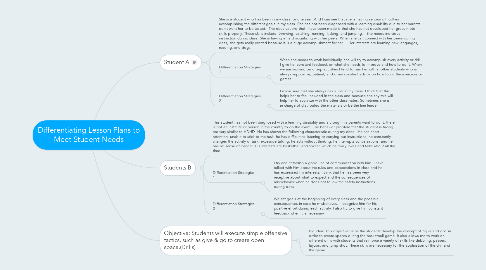
1. Student A
1.1. She is a student who has been in my class for one year. And I can see that she is having serious difficulties accomplishing the different goals in my class. She has not been diagnosed with a learning disability due to her parents don´t want her to be tested. The observations that I have been made is that she has not developed her gross motor skills properly. These skills include, throwing, catching, running, kicking, and jumping. She needs individual instruction during class. She is having a hard socializing with her peers. When she can connect with her peers during class, she gets really excited because it is a huge accomplishment for her. Her interests are learning new languages, reading, and dogs.
1.2. Differentiation Strategies 1
1.2.1. When she needs to work individually, she will try to accomplish every activity or drill. I give her constant feedback on what she needs to improve and how to do it. When we are working on group activities I tend to pair her with another students who is always supportive, patient, and gives constant advice on how to do the exercises or games.
1.3. Differentiation Strategies 2
1.3.1. I make sure that she always has a job in my class. I think that this helps her to feel included in the class and because she shy this will help her to socialize with the other classmates. Sometimes she is in charge of distributed the materials or be the line leader
2. Students B
2.1. This student has not been diagnosed with a learning disability and although his parents want to do it, there is not an institute or person in the country to do the exam. The behavior problem that the student is facing are very similar to ADHD. He has shown the following characteristic during my class: He has short attention, unable to stick to the task, he has difficulties listening or carrying out instructions, he constantly changes the activity or task, excessive talking, he acts without thinking, he interrupts conversations, and he has no sense of danger. His interests are basketball and soccer, which he really loves and talks about all the time.
2.2. Differentiation Strategies 1
2.2.1. I try and establish a good line of communication with him. I have talked with him about the rules and expectations in class and he has expressed his interests. I think that he has been very receptive about what to expect and the consequences of misbehavior when he does not follow the safety instructions during class.
2.3. Differentiation Strategies 2
2.3.1. We set goals at the beginning of every class and the possible consequences in case he misbehaves. I recognize him for his positive effort during each activity. I also try to give him constant feedback when it is necessary.

